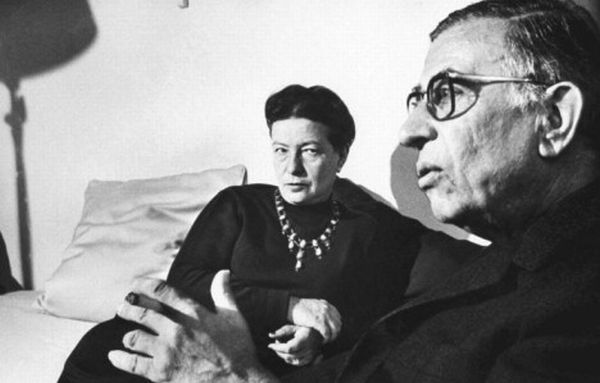
I’m going to have to acknowledge from the outset, here, all the conspicuous and morally ticklish not-so-niceties which are necessarily involved when a grotesquely privileged, white, heterosexual, cisgender (I’m sure someone will correct my use of that particular neologism), Canadian male writes about the problems of feminism in art. This is not intended as irony. Doubtless I place myself squarely in the sights of a particular kind of lefty scorn, appropriation-of-voice-wise, to say nothing of the dubiousness of my targeting (isn’t there a tag in The Second Sex about it not occurring to a man to write about what it means to hold the condition of being a man in society?). Well, all’s fair in the gender wars. I admit my undeserved privilege and surrender the field.
There are (at least) two ways to consider this question, and they’re interrelated but crucially different; on the one hand is the issue of feminist entelechy in the theatre world – i.e., the quantifiable by-the-numbers stuff about women’s gross underrepresentation among the ranks of regularly produced playwrights, directors, and routinely hired ADs – and on the other, more ephemeral questions of feminist aesthetic: what is a feminist play, and do we have a moral responsibility to make them?
The first issue is enjoying a long-overdue vogue in the theatre community’s rank-and-file; vide the recent “Summit” conference in DC, and the Twitterverse’s real-time tweet-slap of Round House Theatre AD Ryan Rilette for some rather dodgy comments he made about women playwrights. The second is somewhat more obscure, and I think deserves to be interrogated very seriously. I recently wrote a blog post responding to Darrah Teitel’s criticism of Michael Healey’s script Proud on the SpiderWebShow Feminist Issue 1.0. I was interested not in the accuracy of that criticism, but in the ethical/aesthetic presumptions which underlie it. I continue to be so; as a writer who has myself made conscious effort to write big parts for women, the fear of the “misogynist” label is never far from mind. This is not the ideal condition under which to write. I quoted on my blog, and quote here again, Ms. Teitel’s friend Adam Nayman:
Representation of women with power are as problematic as representations of women without, mostly because they are written and directed by men.
Double-binds are a particular neurotic cathexis for me, but few yield the kind of artistic despair this does. Nayman is of course correct – but what then? Should we not write them? And what, actually, makes these representations so problematic, other than just the fact they were written by men? There are reasons why the Barthesian tradition advocates the reading of texts anonymously (technically, advocates “The Death of the Author”). The moral/political baggage we bring to a text when we know its supposed “source” necessarily colours our reading – this is as true for the critic who savages a novel because it was written by a woman as it is for interpretations of female characters written by men.
Now before my inbox gets inundated with hate mail, let me just say that this does not at all mean that those readings are wrong or invalid. Quite the contrary; for someone to say that a play is misogynist is a perfectly good and probably defensible interpretation. But this cuts both ways – that is the fundamental problem of interpretation in art, and it makes it extremely difficult to create aesthetico-ethical prescriptions.
In other words, if it’s true that negative portrayals of women in art can and do lead to negative treatment of them (and that sure seems true to me), it seems, on its surface, logical that we ought to affirm the principal that writers have an ethical responsibility to create characters which adhere to feminist ideals. But here, I think, we reach an impasse. What would such characters be and look like? Who is prepared to offer and defend such a schema? And how do we reconcile this moral principle with the fundamental aesthetic problem of what Barthes called the “irreducible plurality” of meaning?
This is fascinating question for a writer like myself because it demonstrates what I’ve always believed to be true: that what seems like just abstruse and cerebral semiology has, in fact, real-world ethical implications. Aesthetic inquiry does not dwell just in the suburbs of academics and the idly curious, but is in fact crucial for better understanding art’s place as a political and cultural institution.
Even if you aren’t convinced by the theories of Paul de Man or Roland Barthes, it seems (at least to me) hard to deny that we can’t define a feminist aesthetic purely through negation. If we’re going to affirm that artists have moral responsibility in their art, it is not enough to simply address a trillion particulars and deem this or that “misogynist.” If we’re going to be prescriptive, then we have to be specific. What is a feminist aesthetic?
This seems an unanswerable question to me. Perhaps my admittedly rather glacial processes of intellection just aren’t up to the task. Nevertheless, however much I might like to say that we should expect artists to lead the vanguard of moral clarity not just as individuals but in their art, I cannot. The cliché that art is better at asking questions than answering them turns out to be true: as Peter Handke once wrote, “[theatre is] no good at all at when it comes to suggesting solutions, at most it is good for playing with contradictions.” These contradictions are what facilitate conversation, what foster dialectic, what gives rise to righteous rage. There were fistfights in the lobby after the premiere of Oleanna, a play many – including myself – have called “misogynist.” But misogynist or not, it mattered to the audience, it moved them, made them feel far more intensely than, say, a film like 12 Years a Slave, which for all of its earnest poignancy and moral clarity is ultimately a work of art that challenges the audience not one jot. Yes, slavery is bad. Thanks. So too is misogyny. But I’m not sure I go to the theatre or the cinema to be reminded of this. Moral prescriptions for the theatre are as deadly whether they come from the right or the left.
This is not an appeal to moral relativism in art, but rather an observation of how the interpretive process of art tends to work. I certainly would never wish to say that reviews like Teitel’s critique of Proud shouldn’t be written – in fact, the opposite. Teitel’s review is a really interesting and useful work; I’m merely suggesting that, for example, perhaps the very fact that a play like Proud can inspire such a response makes the play worthwhile, that controversy and moral ambiguity – even moral confusion – are not deficits in a work of art, but the very things that make it interesting and valuable.
Might a “feminist aesthetic” mean an aesthetic which embraces such controversy, which thrives in it?









